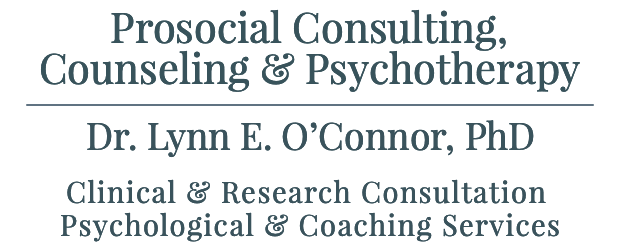How to Meditate (Made Easy): Mindfulness Meditation
Mindfulness meditation is everywhere, for everything and for everyone. Right now I’m teaching a class for doctoral students in clinical psychology on “Contemplative Practices and Clinical Psychology” –and we are having a great time. We’re meditating together. Those of you who have read previous posts on this blog know we’ve been doing research on types of meditation for several years now, finding more evidence of how it is helpful. The following post is something I wrote for my students. You can do this, your partner can do this, your friends can do this, your parents and children can do this. When you learn to meditate you are using your mind to change your brain, you’re rewiring your brain and you’ll end up less anxious, less stressed and happier. Try it.
Make the Decision to Practice: First make the decision to meditate every day –this is called a “practice” because it is literally practicing “paying attention” or being “mindful,” and as with everything else, the more you practice a skill, the better it gets. It really is like learning how to ride a bike, or drive a car, or swim; at first you feel awkward, unskilled, very self-conscious, but with practice it becomes automatic. This is what happens with meditation. And meditating every day make that moment when the skill is automatic come more quickly.
Plan on making your meditation sessions short, just 5 or 10 minutes in the beginning. If you want to go longer that’s fine. However it is better to keep sessions short enough so if you find it at all difficult (remember, that awkward period), you’ll still like it. It’s better to have very short meditation sessions than to have ambitious plans for longer meditations, because then you might start to hate it. Start slow, really slow. You can’t do this thing wrong. You can also try short meditation sessions more than one time each day.
Figure out what you think would be the best time to meditate. It is often recommended that when you first wake up is a good time. It is also often suggested that you keep the same time daily. These are just suggestions, they may not be right for you. If you can’t meditate at the same time every day it doesn’t matter. Whatever rules you hear are rules to be broken. I repeat, you can’t do this thing wrong.
Try to sit with your spine straight, wherever you are comfortable, on a chair, or on a pillow on the floor. Focus for a few moments on your body, where you’re sitting, any tension spots, and try to relax your muscles.
Mindfulness of the breath: Then start focusing on your breath. Feel where your breath comes in your nostrils, and where it is when you exhale. Imagine your breath going in as you inhale, and your breath going out as you exhale. Try to focus on your breath. You will notice that your attention strays, some thoughts or feelings or sounds drag you away from focusing on your breathing. Don’t worry when you notice your mind drifting all over the place. Everyone does that, that’s how our minds are in our ordinary lives. People have called that the “monkey mind.” When you notice your mind has been dragged away from focusing on your breath, don’t get worried, just bring your focus back to your breath.

This is where the magic happens: The first action that is most important for “rewiring the brain” is learning to notice when you’ve drifted away from paying attention to, concentrating on your breathing. This moment of noticing that your mind has drifted is what is meant by being “mindful.” As soon as you notice your mind has been dragged off by one or another thought or feeling, bring your focus and attention back to your breathing. Start again, focusing on your breathing. This is where the magic happens. This is what you practice.
Some people find it helpful to “count” with each full breath. So inhale and then exhale and as you are exhaling, think “I” then “2” etc., each time you exhale. Breathe normally, however you ordinarily breathe. Your breathing doesn’t have to be forced, or deep, your normal breathing is perfect.
There’s another trick you might find helpful when you’re distracted by thoughts or feelings. Put your own thought-words into the focused attention on your breathing. When breathing in you can think “I’m breathing in,” and when you’re breathing out, you can think ‘I’m breathing out.” Putting these words into your meditation on your breath may make it easier to maintain the focus on your breath.
Don’t make any effort to avoid having thoughts and feelings. That’s how our minds function, we have endless thoughts. The idea is to notice these thoughts that have dragged you away from your focus (mindfulness in other words), and then to bring your attention back to your breathing. “I’m breathing in, I’m breathing out.” Later, when you are really familiar with focusing attention on your breathing, you may start to pay more attention to your thoughts, but rather like a fly on the way, with some distance. Thoughts are just thoughts, they come and go all the time, rather like clouds in the sky. Practicing this is how your mind changes your brain, quite literally.
A few other suggestions: From our own research and from recent studies in neuroscience, it seems that having an “altruistic motivation” before you have a meditation session is helpful. It certainly can’t hurt. So before starting your meditation session, briefly think that you are doing this practice for your own benefit and for the benefit of the important people in your life, for people in unfortunate circumstances, and extend this to the whole world. Setting an “altruistic motivation” seems to bring particularly good outcomes. You don’t have to really believe this (or anything) –it’s the doing of it that seems to have a significantly positive effect.
After your meditation session, write in a meditation notebook or diary, how it was, what was problematic, what did you like, what didn’t you like. Note any problems, any discomfort you may have felt. If you skip your meditation session, write a sentence or two about that, why you think that happened. Any experience around meditation is important, personal and on the right path.

That’s how easy it is for you to start right now, join the wave of mindfulness meditators. You may decide to focus on another object, a picture, sounds, you may learn different ways to meditate. All of it will give you the results everyone’s commenting upon. You can do this at home, in a class, with a master. Most important, you can do this wherever you are right now. Just try it, it’s easy and it’s yours.
